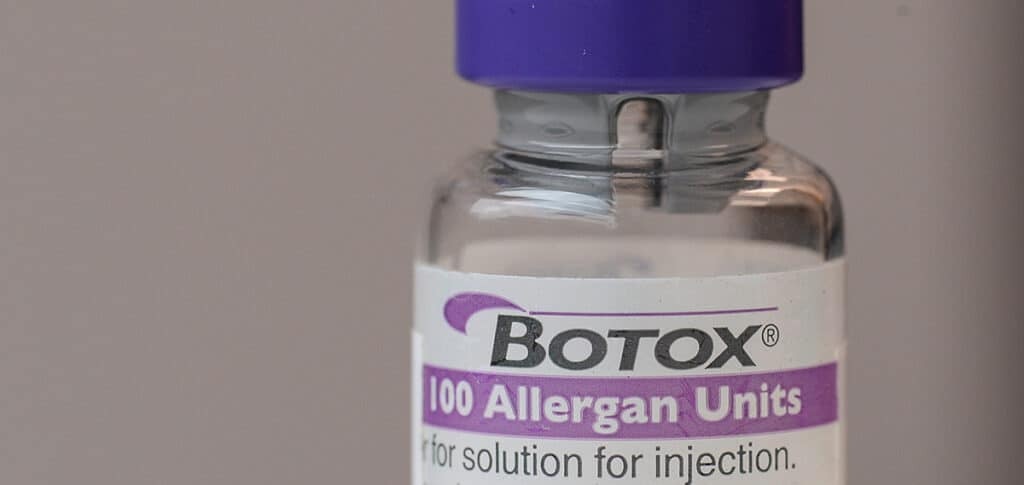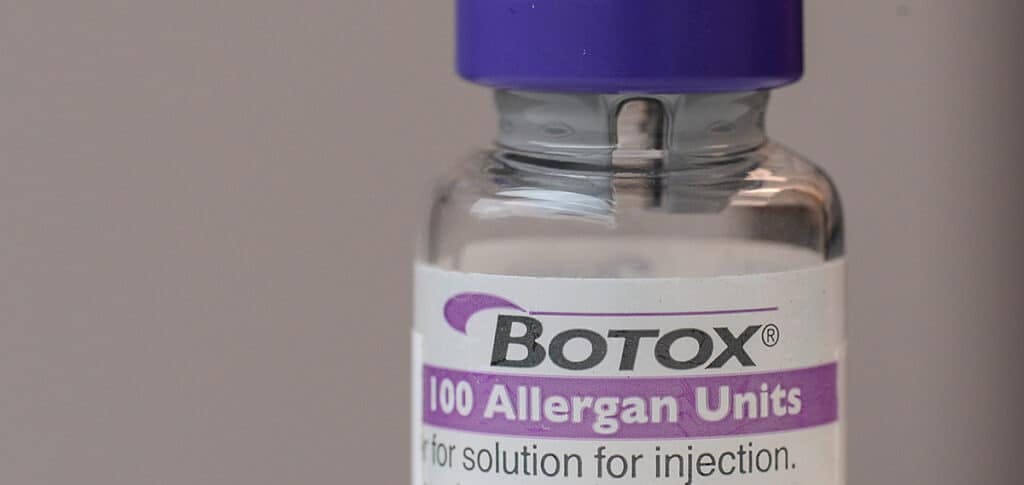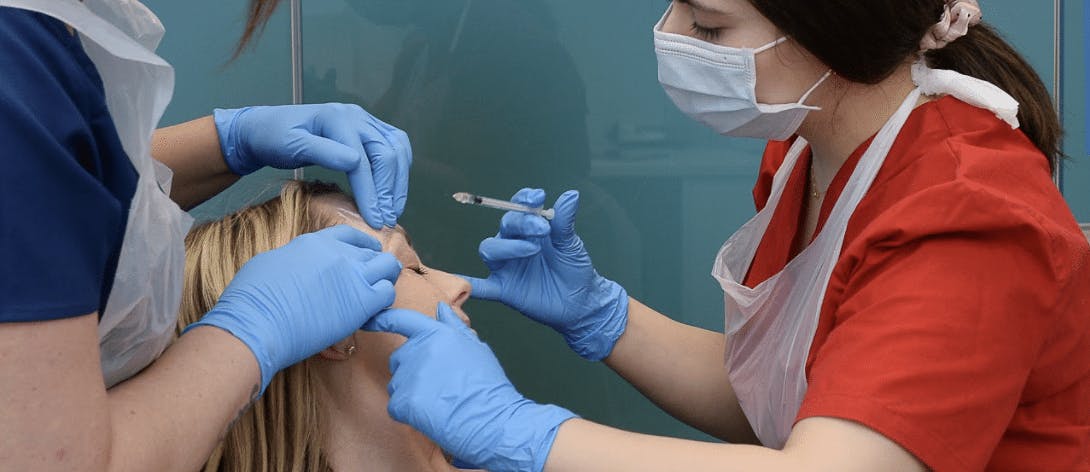Understanding Different Types Of Botulinum Toxin A

A research article published in the Polish Journal of Neurology and Neurosurgery may help injectors to understand the different types of botulinum toxin A (BonT/A).
As the authors explain, “Botulinum toxin type-A preparations are not the same medications”.
Whilst this is true, they all have a shared mechanism of action that causes a presynaptic acetylocholine release block. The key BoNT/A differences can be found in their proteins and, most importantly, dosing.

Botulinum toxin type A preparations: same, but different
While Botox® (Onabotulinumtoxin-A or ONA-BoNT/A, a vacuum-dried powder) is undoubtedly the most widely known type-A neurotoxin in the UK, there are many others in use.
Common BoNTA preparations used by aesthetics practitioners include the following freeze-dried powders:
- Azzalure (Onabotulinumtoxin-A or ABO-BoNT/A)
- Bocouture (Incobotulinumtoxin-A or INCO-BoNT/A)
- Dysport (Abobotulinumtoxin-A or ABO-BoNT/A)
- Xeomin (Incobotulinumtoxin-A or INCO-BoNT/A)
The type A molecule remains the same across these toxins, as does its chemical denervation ability.
Pharmacological and immunological differences
We recommend reading the full article to gain a more thorough understanding of the concepts outlined – and the sources of their research – but these are some of the highlights.
- “The major difference in structure between BoNT/A formulations concerns the presence or absence of complexing proteins. The effectiveness of BoNT/A preparations is not dependent on complexing proteins, but they may increase the risk of the formulation neutralising antibodies.”
- Patients treated with ONA-BoNT/A in “a broad range of injection sites” have reported significantly lower depression incidences than those receiving other treatments for the same conditions. This is now in Phase III trials and hoping to gain FDA approval as a potential treatment for major depression.
- Different degrees of paresis were noted after injecting mice with identical volumes of ONA-BoNT/A, ABO-BoNT/A and INCO-BoNT/A, with ONA-BoNT/A appearing to be twice as potent as ABO-BoNT/A.
- Diffusion of all these type-A neurotoxin formulas is similar. However, despite the “presence of complexing proteins” in ONA-BoNT/A and ABO-BoNT/A, these do not reduce migration.
- ABO-BoNT/A presents a larger anhidrotic halo than ONA-BoNT/A and INCO-BoNT/A.
- INCO-BoNT/A showed the lowest frequency of antibody formation after treatment. It was noted that “treatment-related factors such as toxin dose, frequency of injections, as well as prior exposure via other routes (intradermal or distant to the target muscle), different formulations (eg first application of ONA-BoNT/A or ABO-BoNT/A and second of INCO-BoNT/A) and site of anatomical region (especially near lymph nodes) seem to play a role in immunological response. Based on this knowledge, clinical practice suggests the use of the lowest effective doses and to maintain 12 weeks of minimal interventional treatment. On the other hand, shorter, less than half as long, intervals of injection INCO-BoNT/A have been described as well tolerated and free of antibodies.”
Dosing of different botulinum toxin type-A preparations

Dosing is one of the most obvious and important differentiators between botulinum toxin A preparations.
The article’s authors write, “A does equivalent of BoNT/A formulations is still being discussed. The potency of BoNT/A preparations is expressed as Units (U) and 1U corresponds to one LD50 in mouse bioassay.
“Different diluents for LD50 testing have been used by manufacturers: Allergan uses saline; Ipsen uses gelatin phosphate buffer; human serum albumin as a stabiliser was added by Merz to undisclosed diluent.
“However, it has been suggested that stabilisers can enhance the activity of BoNT/A products at low concentrations in preclinical tests.
“It is suggested that the diluent buffer significantly influences biological activity of BoNT/A products. Nonparallel dose-response curves of ON-BoNT/A and ABO-BoNT/A with different relative potencies can explain a dose conversion ratio between Botox and Dysport.”
Choosing which toxin to work with for new injectors
When it comes to choosing which neurotoxin to use for your patients, we recommend new injectors start off by using whichever product they used in training.
You will already have enough new factors to contend with, such as practising in a new environment, without expert supervision, potentially having to remember to take payment and so on.
Try to minimise your stressors by sticking to what you know until you’ve built up enough confidence and experience to try something new.
Harley Academy medical director and STORY aesthetics specialist, Dr Emily MacGregor advises: “Whilst chemically different Incobotulinumtoxin-A and Onabotulinumtoxin-A are used in almost identical ways; dose-wise one unit of one equates to one unit of the other. To a new injector, this makes it easy for you to transition from using one to another.
In contrast, Onabotulinumtoxin-A is quite different; 1 unit of this – called a Speywood Unit – does not equate to 1 Incobotulinumtoxin-A or Onabotulinumtoxin-A unit – the reconstitution, dosing and volumes injected are quite different. I personally use and would recommend all three of these products, but for new injectors I recommend starting with Incobotulinumtoxin-A or Onabotulinumtoxin-A for ease.”
All information correct at the time of publication.
Download our full prospectus
Browse all our injectables, dermal fillers and cosmetic dermatology courses in one document
By submitting this form, you agree to receive marketing about our products, events, promotions and exclusive content. Consent is not a condition of purchase, and no purchase is necessary. Message frequency varies. View our Privacy Policy and Terms & Conditions
Attend our FREE open evening
If you're not sure which course is right for you, let us help
Join us online or in-person at our free open evening to learn more
Our Partners














STAY INFORMED
Sign up to receive industry news, careers advice, special offers and information on Harley Academy courses and services

